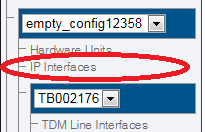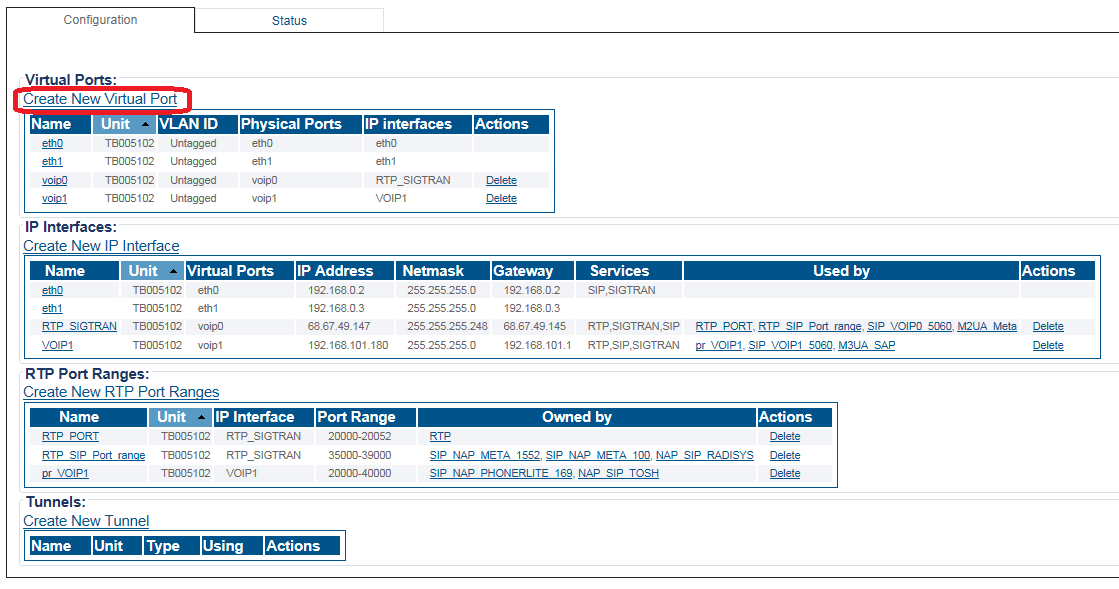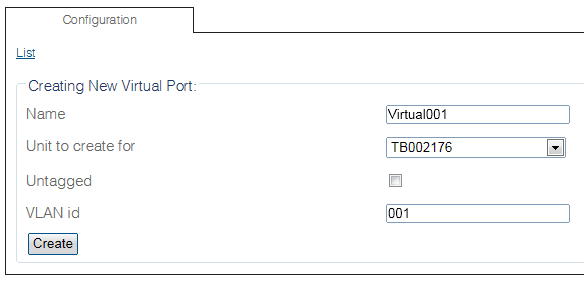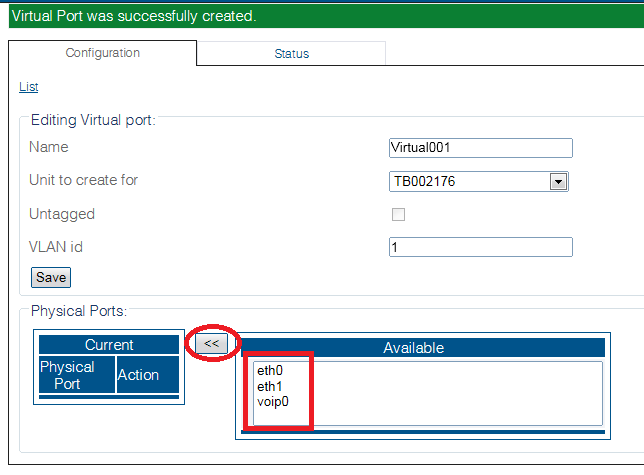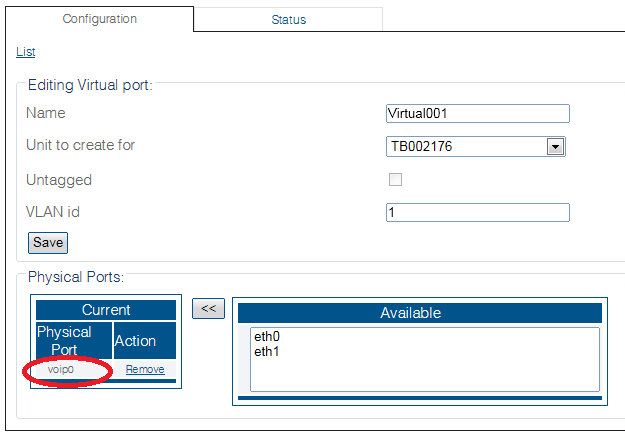Toolpack:Configuring Virtual Port A
From TBwiki
(Difference between revisions)
(→To configure a virtual port) |
|||
| Line 1: | Line 1: | ||
=== '''''Applies to version(s): v2.8.''''' === | === '''''Applies to version(s): v2.8.''''' === | ||
{{DISPLAYTITLE:Configuring a Virtual Port}} | {{DISPLAYTITLE:Configuring a Virtual Port}} | ||
| + | {| class="wikitable" | ||
| + | |- | ||
| + | |rowspan="3"|This article applies to: | ||
| + | |'''Product''' | ||
| + | |'''Version''' | ||
| + | |- | ||
| + | |Tmedia | ||
| + | |2.8, 2.9, 2.10, 3.0, 3.2 | ||
| + | |} | ||
One or more virtual ports can be created to manage IP traffic. | One or more virtual ports can be created to manage IP traffic. | ||
Revision as of 14:33, 10 December 2020
Applies to version(s): v2.8.
| This article applies to: | Product | Version |
| Tmedia | 2.8, 2.9, 2.10, 3.0, 3.2 |
One or more virtual ports can be created to manage IP traffic.
To configure a virtual port
1. Select IP Interfaces from the navigation panel:
2. Click Create New Virtual Port:
3. Configure the virtual port:
- Enter a name for the virtual port
- Select the hardware device to which the virtual port is assinged
- Enter a VLAN ID
- Click Create
4. From the Available ports window, select a physical port to which the virtual port is assigned. Note that this window is scrollable.
The selected port is displayed in the current physical ports window.
